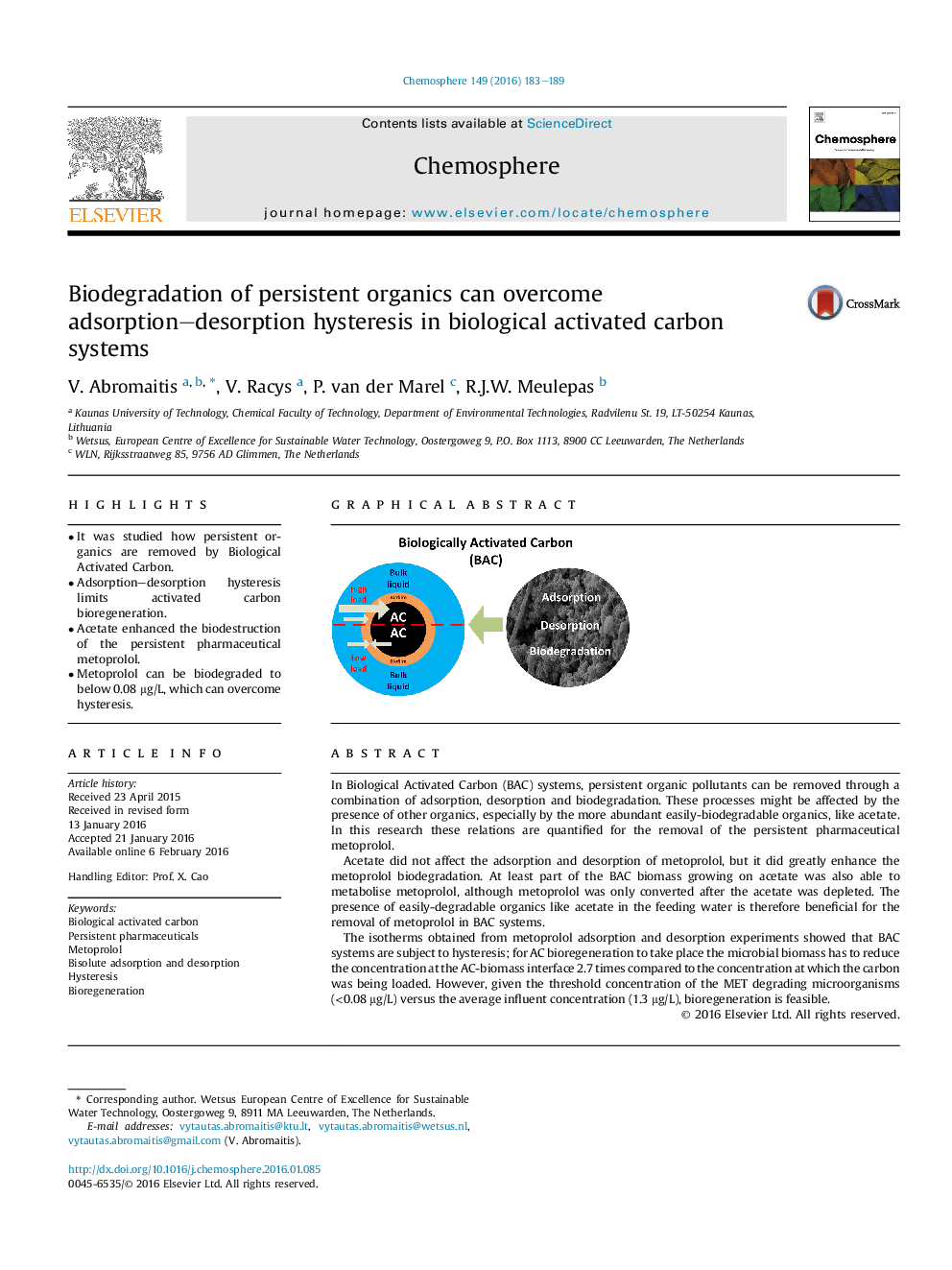| کد مقاله | کد نشریه | سال انتشار | مقاله انگلیسی | نسخه تمام متن |
|---|---|---|---|---|
| 4407880 | 1618822 | 2016 | 7 صفحه PDF | دانلود رایگان |
• It was studied how persistent organics are removed by Biological Activated Carbon.
• Adsorption–desorption hysteresis limits activated carbon bioregeneration.
• Acetate enhanced the biodestruction of the persistent pharmaceutical metoprolol.
• Metoprolol can be biodegraded to below 0.08 μg/L, which can overcome hysteresis.
In Biological Activated Carbon (BAC) systems, persistent organic pollutants can be removed through a combination of adsorption, desorption and biodegradation. These processes might be affected by the presence of other organics, especially by the more abundant easily-biodegradable organics, like acetate. In this research these relations are quantified for the removal of the persistent pharmaceutical metoprolol.Acetate did not affect the adsorption and desorption of metoprolol, but it did greatly enhance the metoprolol biodegradation. At least part of the BAC biomass growing on acetate was also able to metabolise metoprolol, although metoprolol was only converted after the acetate was depleted. The presence of easily-degradable organics like acetate in the feeding water is therefore beneficial for the removal of metoprolol in BAC systems.The isotherms obtained from metoprolol adsorption and desorption experiments showed that BAC systems are subject to hysteresis; for AC bioregeneration to take place the microbial biomass has to reduce the concentration at the AC-biomass interface 2.7 times compared to the concentration at which the carbon was being loaded. However, given the threshold concentration of the MET degrading microorganisms (<0.08 μg/L) versus the average influent concentration (1.3 μg/L), bioregeneration is feasible.
Figure optionsDownload as PowerPoint slide
Journal: Chemosphere - Volume 149, April 2016, Pages 183–189
